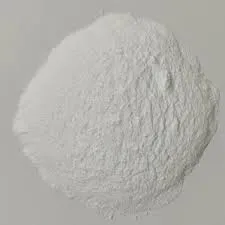The Role of PAM Flocculant in Water Treatment
Polyacrylamide (PAM) flocculant has emerged as a vital agent in the water treatment industry, significantly enhancing the efficiency of various processes. This synthetic polymer, due to its unique properties, plays a crucial role in water clarification, sludge dewatering, and even in the processing of industrial wastewater. Understanding the applications, advantages, and mechanisms of PAM flocculant can provide insight into its pivotal role in environmental management.
Understanding PAM Flocculant
PAM is a soluble polymer primarily made from acrylamide monomers. It can be categorized into several types, including anionic, cationic, and non-ionic, depending on the functional groups attached to the polymer backbone. This versatility allows PAM to be tailored for specific applications depending on the charge characteristics and molecular weight, making it a go-to choice for various industries.
Applications of PAM Flocculant
The application of PAM flocculant is widespread, particularly in wastewater treatment plants. Its primary function is to aggregate suspended particles, allowing them to clump together and settle more effectively. This is crucial in removing contaminants from water, including organic matter, heavy metals, and other pollutants.
1. Municipal Wastewater Treatment PAM is widely used in municipal wastewater treatment, where it aids in the clarification of sewage water. By promoting the formation of larger flocs, PAM facilitates the efficient removal of solids during the sedimentation process.
2. Industrial Applications In industries like mining, paper manufacturing, and food processing, PAM flocculant is utilized to manage effluents and sludge. For instance, in the paper industry, it helps in the recovery of fiber from wastewater, minimizing waste and improving sustainability.
3. Oil and Gas Industry The petroleum sector employs PAM in drilling and fracking fluids to enhance the efficiency of resource extraction while managing the resulting wastewater.
Advantages of PAM Flocculant
pam flocculant

The benefits of using PAM flocculant in treatment processes are manifold
- Efficiency PAM flocculant efficiently reduces turbidity in water, leading to cleaner effluent. This efficiency translates into lower operational costs for water treatment facilities. - Versatility The ability to modify PAM for specific applications makes it suitable for a wide range of industries, from municipal to industrial wastewater treatment.
- Cost-effectiveness By improving the efficiency of sedimentation and filtration processes, PAM helps lower costs associated with chemical treatments and energy consumption.
- Environmentally Friendly PAM, when used in controlled amounts, poses minimal environmental risks. Many formulations are non-toxic, biodegradable, and even safe for use in potable water applications.
Mechanism of Action
The flocculation process involves several steps where PAM plays a key role. Upon addition to water, the polymer chains of PAM dissolve and align themselves, interacting with suspended particles. As these chains intertwine with particles, they create a network that entraps smaller particles and aggregates them into larger flocs. This process increases the settling rate of solids, which can then be removed from the water column effectively.
Conclusion
PAM flocculant is an indispensable tool in modern water treatment, providing numerous benefits across different sectors. Its ability to aggregate particles, improve clarity, and enhance sludge management makes it invaluable in addressing water pollution and ensuring clean water accessibility for various uses. As global water challenges increase, the role of effective flocculants like PAM will only become more critical. Continued research and development into more environmentally friendly forms of PAM could further optimize its use, ensuring that water treatment processes remain sustainable and effective for the future.
In summary, PAM flocculant stands at the intersection of environmental science and industrial efficiency. Its applications in water treatment enhance our capacity to manage one of the planet's most precious resources, making it essential for both environmental protection and economic sustainability.

